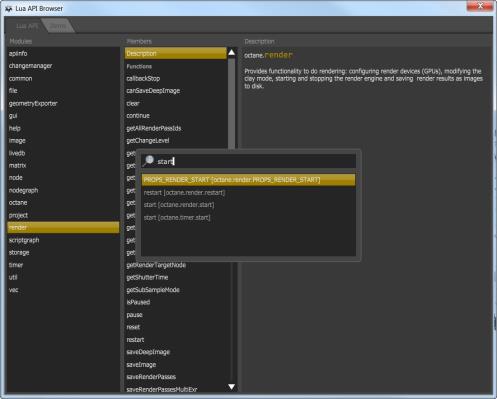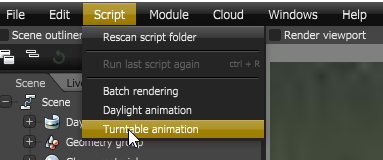
The Script menu contains some pre-coded scripts which are ready to use. If nedeed, you can also improve these scripts through Octane's LUA script editor or any text editor.

Figure 1: The Script Menu items.
The Turntable Animation script is used to automatically render out images that are later pieced together to form a turntable animation. You'll need to supply the animation settings.
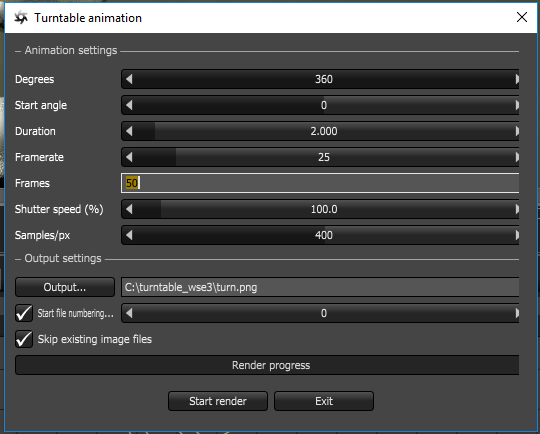
Figure 2: The Tirntable Animation settings window.
The Duration and number of Frames are directly associated such that these will re-adjust when the other is changed. The shutter speed creates the motion blur effect, it specifies the shutter time percentage relative to the duration of a single frame. Shutter Time controls how much time the shutter stays open. You can set this parameter to any value above 100%.

Figure 3: In the example above, 50 frames is specficed after which the rendered images are saved into the output directory specified.
LuaA scripting language that supports procedural, object-oriented, functional, and data-driven programming. It can be used to extend Octane’s functionality.A scripting language that supports procedural, object-oriented, functional, and data-driven programming. It can be used to extend Octane’s functionality. scripting in OctaneRender allows user to create their own scripts to automate workflows or augment certain procedures. Animation scripts store their settings per project instead of globally in the applications settings.
The script Editor is used to create, edit and save new scripts or open existing scripts for editing. Detailed documentation about the available API modules is provided through the Lua API browser, the documentation is also available as an HTML page via our HTML documentation script page.
For those who are new to Lua, check out Programming in Lua online: http://www.lua.org/pil/contents.html.
Below are practical facts about Lua ScriptingA scripting language that supports procedural, object-oriented, functional, and data-driven programming. It can be used to extend Octane’s functionality.A scripting language that supports procedural, object-oriented, functional, and data-driven programming. It can be used to extend Octane’s functionality. in OctaneRender:
Using the LUA API Browser
The Octane API exposes a single table called octane. You can find this table in the documentation as the Octane module.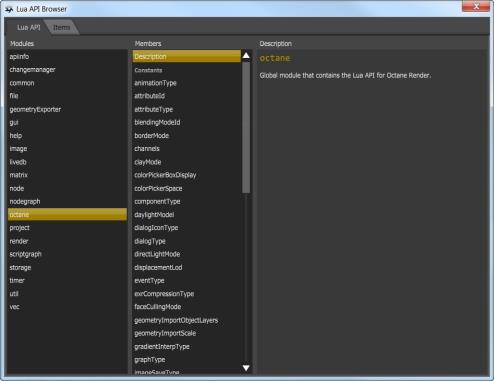
The octane table contains all the other modules such as octane.gui which is the gui module in the API browser. Now let’s have a closer look at the gui module. The Members column lists three kinds of items: Functions, Properties, and Constants.
The items listed under Constants are other tables which, in turn, contain constants which can be used as function arguments. All these values can be seen listed in the Description column. So octane.gui.componentType is a table, and octane.gui.componentType.BUTTON is the number 2:
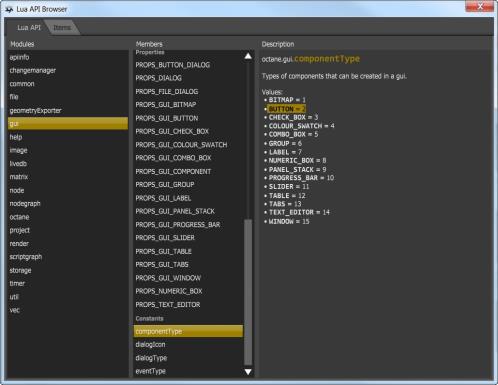
All the constants listed in the octane module are a special case because these are also available directly in the octane table itself. Therefore both octane.attributeId.A_COLOR and octane.A_COLOR are the number 28:
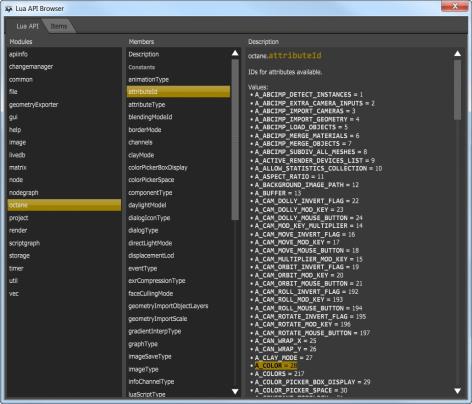
The items under Functions describe all the functions in a module. The create item describes a function in the gui module, the function call looks like this: octane.gui.create(table). Functions in Lua have a number of parameters and a number of return values, this one is simple: it has one parameter, and one return value.

The description of parameters and return values follows the following pattern: it gives the type, and some name (this can be a user-defined arbitrary name in the user script). The single parameter is listed as table PROPS_GUI_COMPONENT, so it should get a table as argument. The name is chosen to refer to an item under Properties below. The return value is listed as being a component. This is a custom type defined by Octane.
The items under Properties are different, these are not actually present in the API, but these are descriptions of information that have to be sent to a function, or information that have to be returned from a function.
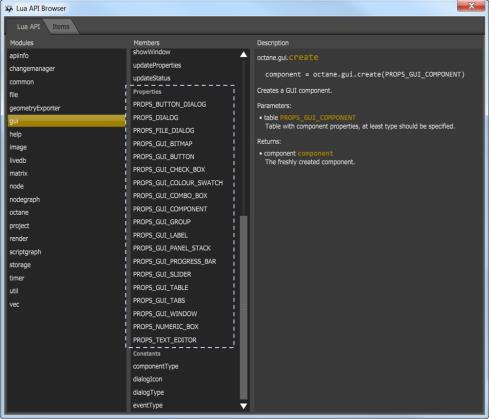
A lot of functions in the Lua API Browser return a table. For example, using octane.gui.getProperties to get the properties of a GUI component returns a table containing information about the object that has just been created. The contents of the table depends on the type of the component, but it is described by one of the items here. if you create a slider you will get a table with information described by the PROPS_GUI_SLIDER item. You can also find all the other component types here.
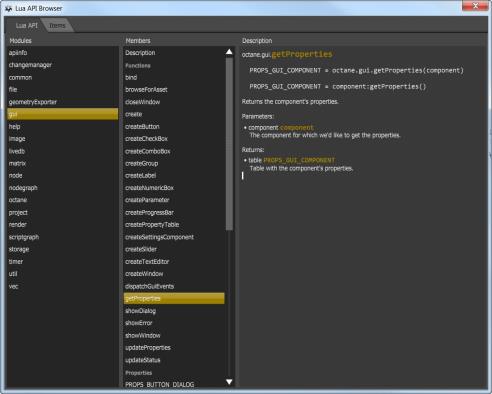
A lot of functions also take a single argument which is a table. octane.gui.create is such a function. These tables are also described here. For this function these are the same descriptions as the ones returned from octane.gui.getProperties.
Simultaneously pressing <CTRL> key + F key while in the LUA API browser invokes the Search Dialog, which is used to quickly find and select nodes and dynamic pins that contain the entered search string.
